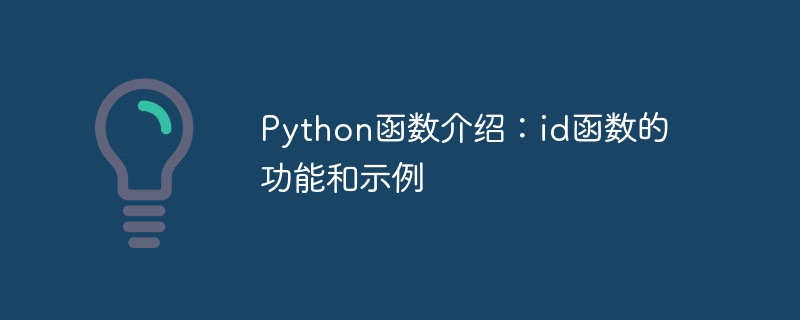

Introduction to Python functions: functions and examples of the id function
The id() function in Python is a built-in function that can return the memory address of an object. This memory address is an integer that uniquely identifies the location of the object in the computer's memory. The syntax of the id() function is as follows:
id(object)
Among them, object is the object that needs to obtain the memory address, which can be any object in Python such as numbers, strings, lists, tuples, dictionaries, sets, etc.
The return value of the id() function is an integer, representing the address of the object in computer memory. If the return values of id() of two objects are equal, then they are the same object.
The following are some examples to help you better understand the function of the id() function:
# 示例1:获取整数对象的内存地址 a = 123 print(id(a)) # 输出:140707313355888 # 示例2:获取字符串对象的内存地址 b = 'hello' print(id(b)) # 输出:4350869408 # 示例3:获取列表对象的内存地址 c = [1, 2, 3] print(id(c)) # 输出:4350088200 # 示例4:判断两个对象是否相等 d = [1, 2, 3] e = [1, 2, 3] print(id(d) == id(e)) # 输出:False print(id(d) == id(d)) # 输出:True
As can be seen from the examples, the return values of id() for the same object are equal, The return values of id() for different objects are not equal. Additionally, even if two objects have the same value, their id() return values may not be equal because they are stored in different locations in computer memory.
In actual programming, the id() function is often used to compare whether two objects are equal. If the return values of the id() functions of two objects are equal, then they can be considered to be the same object and can be compared directly using the "==" operator. However, it should be noted that the id() function can only be used to compare whether mutable objects are equal. The "==" operator should be used to compare whether immutable objects are equal.
The above is the detailed content of Introduction to Python functions: functions and examples of the id function. For more information, please follow other related articles on the PHP Chinese website!




